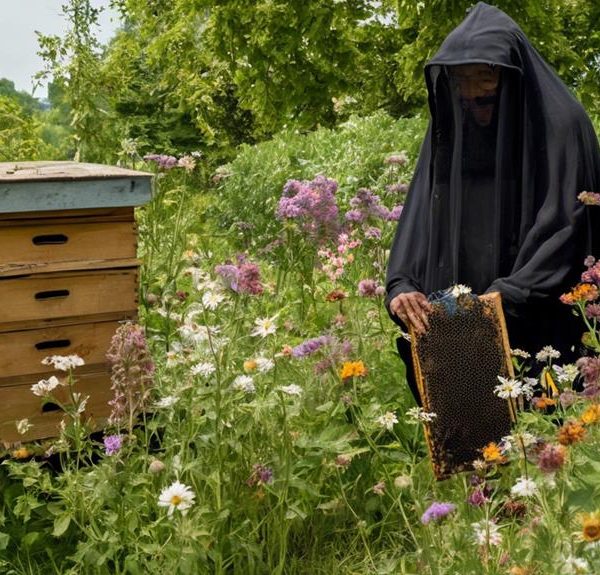Yearning to uncover the mystery behind beeswax weight? Discover how factors like temperature, humidity, and bee type can influence its weight.
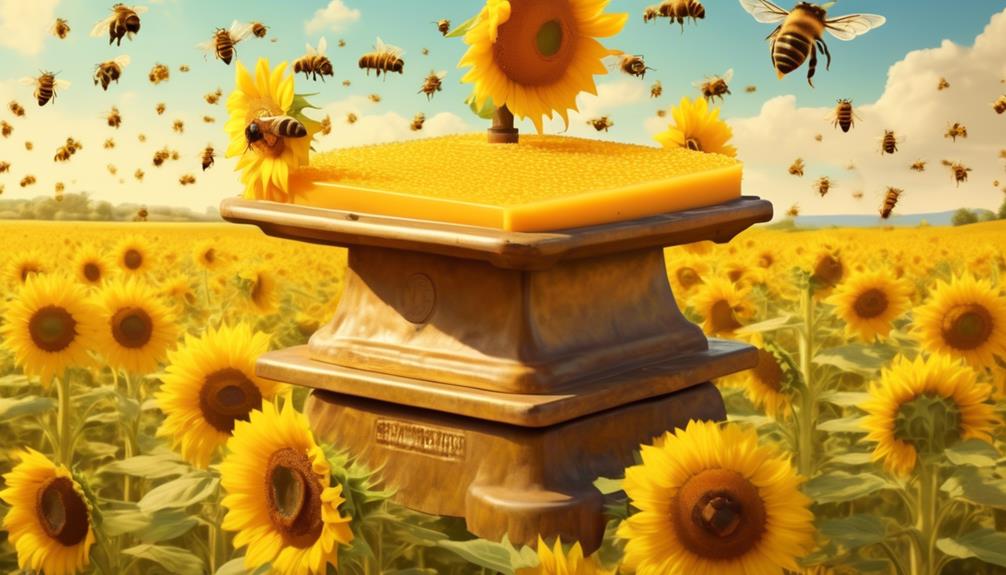
How Much Does Beeswax Weigh?
Just as every snowflake is unique in its shape and size, so too does beeswax vary in its weight. You might be wondering, how much does a specific amount of beeswax weigh?
It's not as straightforward as you might think. Factors such as temperature, humidity, and even the type of bee that produced the wax can affect its weight.
Let's embark on a journey to unravel the mystery of beeswax weight, a topic that's more complex and intriguing than it initially appears.
Key Takeaways
- Beeswax weight is influenced by factors such as purity, moisture content, and environmental conditions.
- Accurate measurement of beeswax weight is essential for various industries, including candle making, cosmetics, and food production.
- The weight of beeswax does not always indicate its quality, as high-quality beeswax can be lighter if it is pure and has low moisture content.
- The color of beeswax is determined by the flowers the bees have been foraging, not the weight.
Understanding Beeswax Basics
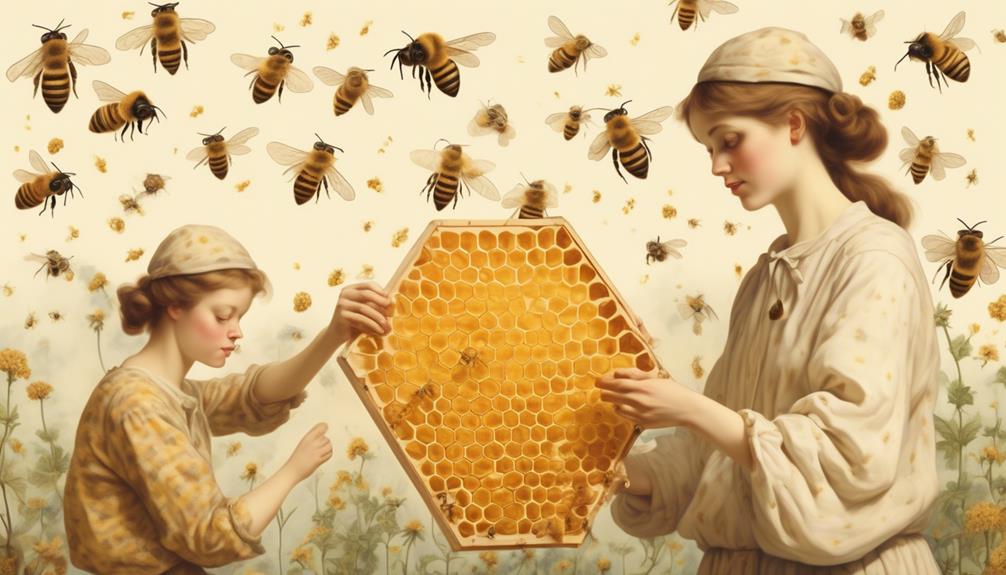
To truly grasp how much beeswax weighs, you must first delve into the fundamental aspects of beeswax, its production, and its unique properties. Beeswax is a natural wax produced by honey bees. The worker bees, which are the females, have special glands on their abdomens that secrete the wax as a liquid. When exposed to air, it hardens and forms a protective layer for their hive.
Now, let's talk about the unusual properties of beeswax. It's incredibly dense and heavy. It also has a relatively high melting point, between 62 to 64 degrees Celsius. This means it takes more heat to melt beeswax than it does for many other types of wax.
The weight of beeswax can vary depending on a few factors. The most significant of these is its purity. Pure, unfiltered beeswax is heavier because it contains impurities like pollen and propolis. Once it's filtered and processed, it becomes lighter.
Factors Affecting Beeswax Weight
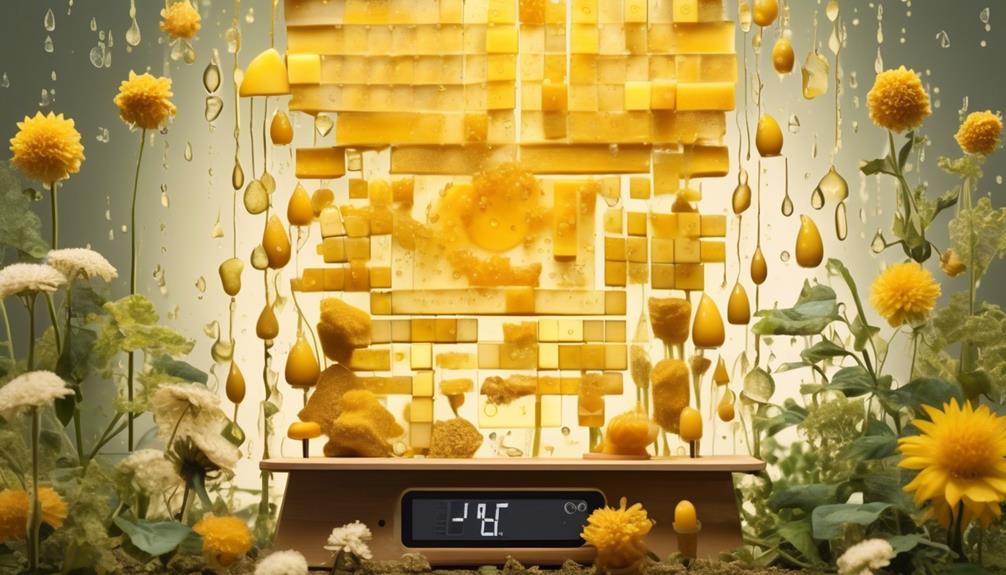
Building on the understanding of beeswax's unique properties, let's now examine the various factors that can affect its weight.
Primarily, the weight of beeswax is influenced by its purity. Pure beeswax weighs more than adulterated or diluted beeswax because it's denser. Impurities, such as honey, pollen, or other debris, can decrease its weight.
Another crucial factor is the moisture content. Beeswax with high moisture content weighs more than dry beeswax. However, when the moisture evaporates, the weight decreases. The environmental conditions including temperature and humidity, where the beeswax is stored, can also affect its moisture content and consequently its weight.
The age of the beeswax can play a role too. Over time, beeswax might lose weight due to natural evaporation of volatile compounds. Furthermore, the type of bees that produced the wax can have a slight impact on the weight. Different bee species produce wax with slight variations in composition, which can subtly affect the density and hence the weight.
Understanding these factors can help you estimate the weight of beeswax more accurately and efficiently. Remember, the weight of beeswax can vary depending upon these factors.
Measuring Beeswax Weight Accurately
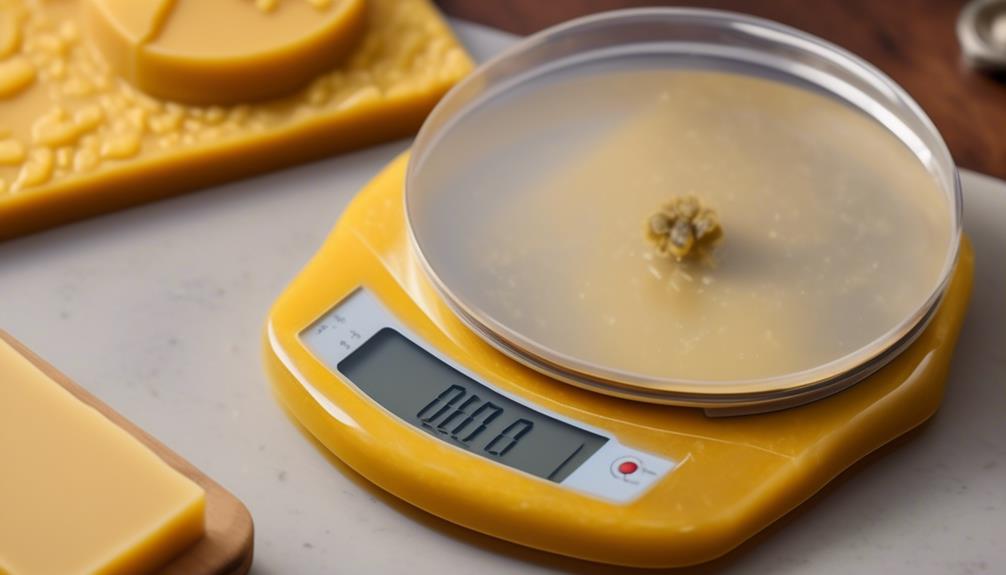
When it comes to accurately measuring the weight of beeswax, understanding the correct procedures and tools can prove invaluable. It's crucial to note that beeswax is typically sold by weight, not volume, so precision is key.
You'll need a digital scale for the most accurate results. Ensure it's calibrated correctly before starting your measurements. Place a container on the scale and reset it to zero. This method, known as 'taring,' removes the weight of the container from your measurement, ensuring you're weighing only the beeswax.
Next, add your beeswax to the container gradually. If your scale has a high precision level, it'll detect even the smallest weight changes. Do this until you've reached your desired weight. Remember, it's easier to add more beeswax than to remove it, so proceed with caution.
Temperature can affect beeswax's weight, so keep your environment consistent. Cold beeswax is denser and may weigh more than warm beeswax.
Applications of Beeswax by Weight

Understanding the weight of beeswax you require is essential, particularly in industries such as candle making, cosmetics, and food production, where precise proportions can significantly impact the quality of the final product. In candle making, for instance, the weight of beeswax used directly influences the burning time. Too much beeswax can lead to a fast-burning, inefficient candle, while too little can result in a weak flame and poor scent throw.
In the cosmetics industry, beeswax is a key ingredient in products like lip balms, lotions, and makeup. Here, the weight of beeswax contributes to the texture, stability, and moisturizing properties of the product. A mere ounce can transform a runny lotion into a thick, luxurious cream.
Lastly, in food production, beeswax is often used as a coating or glazing agent. Precise weight measurements are crucial here as well. Too much beeswax can negatively impact the taste and texture of the food, while too little mightn't provide the desired protective or aesthetic effect.
Therefore, it's clear that understanding the weight of beeswax is critical in numerous applications. Accurate measurement and correct usage can greatly enhance product quality.
Common Misconceptions About Beeswax Weight
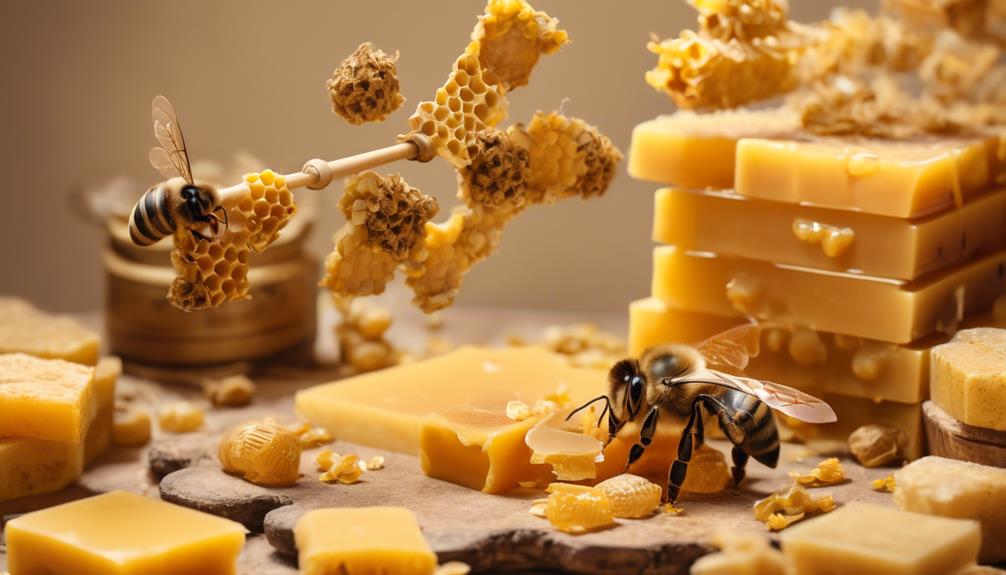
Despite the clear importance of accurately measuring beeswax by weight, there are several misconceptions that often lead to mishandling or misuse in various applications.
Firstly, you might think that all beeswax weighs the same. However, that's not the case. The weight can vary depending on the purity and moisture content, as well as the temperature at which it's measured. It's crucial to understand that beeswax expands when it's heated, which can cause it to weigh less per unit of volume.
Secondly, there's a common myth that beeswax weight is directly proportional to its quality. That's not necessarily true. While weight can indicate the presence of impurities, it doesn't always correlate with the wax's overall quality. High-quality beeswax can be lighter if it's pure and has a low moisture content.
Lastly, don't assume that darker beeswax weighs more than lighter ones. The color of beeswax is dictated by the type of flowers the bees have been foraging, not the weight.
Frequently Asked Questions
What Are the Different Types of Beeswax and How Do They Differ in Weight?
You're asking about the various types of beeswax and their weights.
Well, beeswax types mainly include white, yellow, and absolute beeswax. They're all pretty similar in weight.
Typically, a cubic inch of beeswax weighs about 0.96 ounces. However, the weight can slightly vary based on its purity and the specific type of bees it's sourced from.
How Is Beeswax Harvested and Does the Harvesting Process Affect Its Weight?
You harvest beeswax by removing it from the honeycomb. This process doesn't significantly affect its weight. After extraction, you'll melt it down. This may cause a slight weight loss due to the evaporation of residual water content. However, it's the type of beeswax, not the harvesting process, that primarily determines the weight.
Can the Weight of Beeswax Be Altered During Storage or Transportation?
Yes, the weight of beeswax can be altered during storage or transportation.
If you're storing it in a humid environment, it can absorb moisture and become heavier. Heat can also melt it, causing a decrease in weight.
During transportation, rough handling can chip or break it, resulting in weight loss.
Therefore, it's critical to store and transport beeswax under controlled conditions to maintain its weight and quality.
How Does Beeswax Weight Impact Its Price in the Market?
The weight of beeswax directly impacts its market price. You'll find that as the weight increases, so does the cost. This is because beeswax is sold by weight, so naturally, more of it means a higher price.
However, remember that quality is key. Poor-quality beeswax, even in large amounts, won't fetch a high price. So, it's not just about quantity, it's about delivering a product that meets buyer's expectations.
Are There Any Health or Safety Concerns Related to the Weight of Beeswax in Certain Applications?
You've asked about potential health or safety concerns related to beeswax weight in certain applications.
There's no direct health risk associated with the weight of beeswax itself. However, if you're using it in large quantities, say in candle-making, it's vital to handle it properly to avoid burns during the melting process.
Also, ensure your workspace is well-ventilated as overheating beeswax can release toxic fumes.
Conclusion
So, you've delved into the world of beeswax weight, its influencing factors, accurate measurements, applications, and misconceptions.
It's clear that the weight can vary significantly, impacted by factors like purity and temperature.
With accurate measurement techniques, you can apply beeswax effectively in various fields.
Remember, not all beeswax weighs the same, debunking any misconceptions.
Keep exploring and applying this knowledge scientifically, it'll surely bring a new perspective to your understanding of beeswax.


